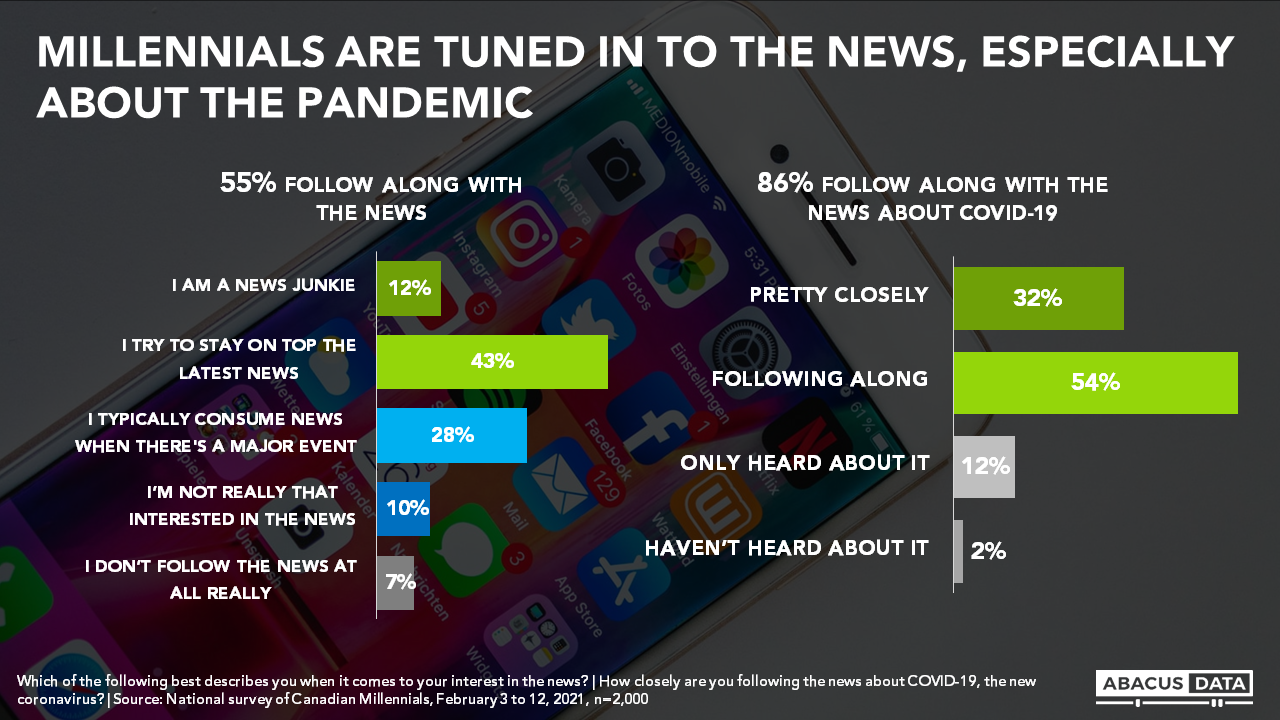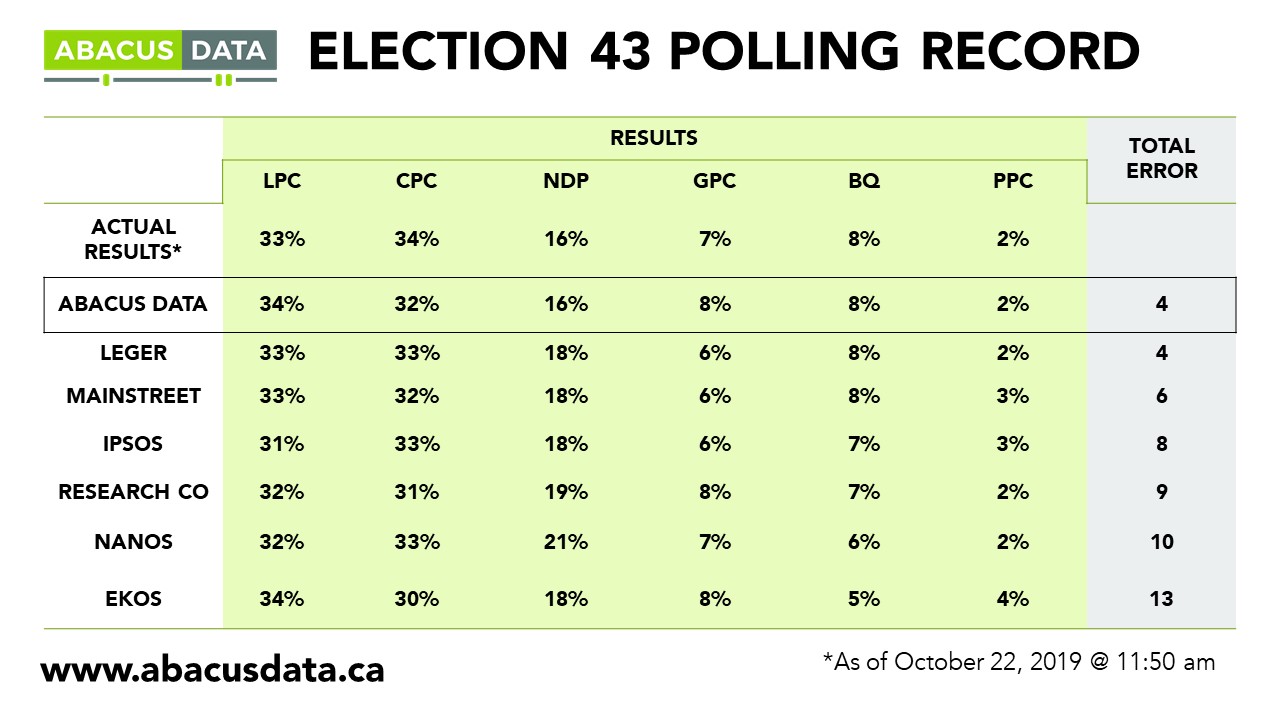How do you reach Millennials?
April 1, 2021
Millennials have grown up as the guinea pigs for new technology and new ways of connecting, from MSN and Myspace to the launch of Facebook, to the recent explosion of social media platforms that cater to every media format and interest. Millennials have a more diverse selection of online communication and expression than any previous generation.
As the Millennial generation ages, their interests change with them, including how they prefer to interact and find their news, and how they engage and share their lives with others. We see this reflected in the most recent wave of our Canadian Millennials Report.
So how do we reach millennials today? Which social media platforms do they prefer to use and how have these preferences shifted over the years? The answer is: it depends.
Here is a snapshot of our most recent findings from our Canadian Millennials Report:

1.The landscape of social media platform use continuously changes.
- Facebook is still a top contender for engagement & consumption. But it’s losing steam. Although Facebook is still one of the most popular social media platforms, Millennials are logging on Facebook daily less often and they’re spending less time using the platform when they do. This platform is no longer a go-to news source but maintains platform loyalty with older millennials. These are the OG Facebook users, who experienced the platform as one of the first of its kind and have remained active users over the years.
- Instagram, the visual-first platform, has maintained consistent usage levels – never accumulating the engagement of YouTube or Facebook. Its capabilities have been reflected in its Millennial engagement – half check their Instagram daily and spend nearly 4 hours a week using the platform. This is higher than Twitter but much more moderate than Facebook or YouTube. There has been a slight increase in daily use since 2018, possibly as a result of increased service offerings with Stories, and Reels. Millennials under 30 are particularly active users of Instagram, posting photos of themselves slightly more often than those over 30.
- Twitter is a quick stop and not always daily, but is attractive to news junkies and those who have been following news on the pandemic closely. Millennials log on to be able to get a quick snapshot of the news, follow topics that they are interested in, and check in on content shared by those they follow. Millennials who check Twitter everyday are 6-points more likely to consider themselves to be a “news junkie” and are 7-points more likely to have been following news about COVID-19 pretty closely, than the rest of the generation.

2. YouTube is in its own class when it comes to Millennials consuming content on its platform.
The saying “going down the rabbit hole” was made a reality by YouTube. Millennials find themselves spending hours watching short video after video and watching live streams and blogs from their favourite content creators. Younger Millennials are the leading users of YouTube, particularly those under 30.
Although similar numbers are logging in daily in 2018 vs. 2012, Millennials are spending, on average, less hours a week on YouTube (8.9 hours a week on average in June 2018 vs. 7.5 hours in March 2021). it’s possible that as other social media platforms build their video features (like Live Twitter events), or a dedicated Reels tab on Instagram) features that were unique to YouTube in the past, are now standard for all social platforms.
3. Millennials engage with social media to learn about social events, and COVID-19 is a prime example.
Although Millennials have diverse interests and motivations, there is a general trend amongst this generation to be more apathetic towards social issues like sustainability and inclusion.
Over half typically stay up to date on the latest news and enjoy the ease at which social media platforms deliver this content.
Since our daily lives have been turned upside down, more Millennials are tuned in to current developments and breakthroughs in vaccine production and rollout, with 86% following along with news about COVID-19, compared with 55% that normally try to stay on top of the latest news.
Not only are Millennials following the latest news from a variety of sources, a third share content like news articles on social media daily – this practice is more common among younger Millennials.

4. Public image of social media platforms and brands associated with them is crucial.
From our past research, we know that Millennials care about what the brands and companies they associate themselves with say about them. Social media platforms need to work hard to stay in Millennials’ good graces.
We looked at impressions of Facebook and perceptions of how much harm vs. good the company does. Both metrics return split opinions – a third feel positively about the company and a third have negative impressions, and nearly half believe the company does more harm than good through the services it offers.
Although we are not attributing a causal relationship between Facebook use decline over the years and its equally declining public image, it is something for all social media platforms to consider. In fact, we found that Millennials with a negative impression of Facebook are 20% less likely than average to use the platform daily and those with a positive impression are 20% more likely to use the platform daily.

THE UPSHOT
According to Megan Ross: Millennials spent the better half of their upbringing without social media but have adopted it as though it has always been around. Social media use is not likely to decline in the foreseeable future – many depending on it as their primary way to communicate and connect with friends and family throughout the pandemic.
Though social media platform preference continues to shift, there are no large upsets in change in social media use over time – it has been relatively gradual.
Platforms are beneficial for different kinds of engagement and information sharing. Each has its unique advantages and weaknesses, and Millennials have the bandwidth to spend time exploring many of them.
And don’t miss any of our research and analysis, plus get our weekly Worth A Look newsletter. Sign up today.
METHODOLOGY
Our survey was conducted online with 2,000 Canadian millennials from February 3 to 12, 2021. The Canadian Millennials Report is the largest syndicated study of millennials in Canada. We survey 2,000 millennials twice a year on a range of topics including politics, social values, and consumer trends. If you are interested in learning more about this generation, reach out to us and we would be happy to connect.
The Marketing Research and Intelligence Association policy limits statements about margins of sampling error for most online surveys. The margin of error for a comparable probability-based random sample of the same size is +/- 2.2%, 19 times out of 20.
ABOUT ABACUS DATA
We are the only research and strategy firm that helps organizations respond to the disruptive risks and opportunities in a world where demographics and technology are changing more quickly than ever.
Find out more about what we are doing to help clients respond to the COVID-19 pandemic.
We are an innovative, fast-growing public opinion and marketing research consultancy. We use the latest technology, sound science, and deep experience to generate top-flight research-based advice to our clients. We offer global research capacity with a strong focus on customer service, attention to detail and exceptional value.
We were one of the most accurate pollsters conducting research during the 2019 Canadian Election.

Contact us with any questions.
Find out more about how we can help your organization by downloading our corporate profile and service offering.



